Introduction to Yahoo SMTP Settings

To effectively manage your email with Yahoo, leveraging Yahoo SMTP settings is crucial. These settings allow your Yahoo Mail account to connect seamlessly with email clients, enhancing your email experience through improved security and efficiency.
By configuring Yahoo SMTP correctly, you ensure reliable email delivery and secure communication, making your Yahoo account more versatile and functional across different platforms.
Yahoo Mail supports various protocols that allow users to access and manage their email from different devices and email clients. The three main protocols are SMTP (Simple Mail Transfer Protocol), IMAP (Internet Message Access Protocol), and POP (Post Office Protocol). Each serves a different purpose and has its own settings for configuration
Importance of SMTP Settings in Yahoo Mail
Integration with Email Clients
SMTP settings enable Yahoo Mail users to integrate their accounts with third-party email clients, allowing for seamless email management across different applications and platforms.
Secure Email Transmission
Utilizing SMTP settings with SSL or TLS encryption ensures that emails sent from Yahoo Mail accounts are protected during transmission, safeguarding sensitive information against unauthorized access.
Advanced Email Management Features
Professional and business users benefit from SMTP settings by using email clients with advanced management features such as email scheduling, tracking, and organization tools, improving productivity and communication efficiency.
Bulk Email Sending Capability
SMTP servers are equipped to handle bulk email sending, which is essential for businesses and organizations that distribute newsletters, promotional content, or updates to a wide audience, ensuring efficient delivery and minimizing issues with spam filters.
Enhanced Control Over Email Settings
SMTP configuration offers users greater control over their email settings, including server port selection and encryption options, allowing for a customized email-sending experience.
What Are Yahoo SMTP, IMAP & POP Settings
Here are the SMTP, POP, and IMAP server settings for Yahoo Mail:
Yahoo SMTP Settings
SMTP is used for sending emails from your Yahoo account through a third-party email client.
- SMTP Server: smtp.mail.yahoo.com
- Port: 465 (with SSL) or 587 (with TLS)
- Authentication Required: Yes
- Username: Your full Yahoo email address
- Password: Your Yahoo account password or app-specific password
Yahoo IMAP Settings
IMAP is used to access and manage your Yahoo Mail account remotely, allowing for synchronization across devices.
- IMAP Server: imap.mail.yahoo.com
- Port: 993
- Requires SSL: Yes
- Username: Your full Yahoo email address
- Password: Your Yahoo account password or app-specific password
Yahoo POP Settings
POP is used to download emails from your Yahoo account to the email client or device, allowing for local access.
- POP Server: pop.mail.yahoo.com
- Port: 995
- Requires SSL: Yes
- Username: Your full Yahoo email address
- Password: Your Yahoo account password or app-specific password
How to Configure Email Client with Yahoo SMTP Settings
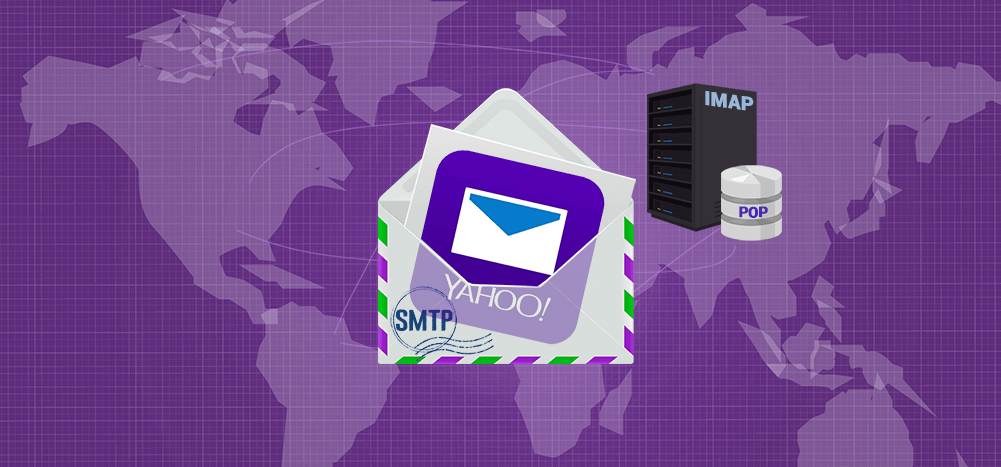
When setting up your email client, you will generally find the SMTP settings in the account settings or email settings section of the application.
Here's a step-by-step guide for Configuring Yahoo SMTP settings
Step 1: Open Your Email Client's Account Settings
Launch your preferred email client and navigate to the account settings or account setup section.
Step 2: Add or Edit an Email Account
If you're setting up a new account, choose the option to add a new email account.
If you're modifying an existing Yahoo Mail account, find the account in the list and choose to edit its settings.
Step 3: Enter Your Yahoo Email Information
Upon request, input your complete Yahoo email address (for example, yourname@yahoo.com) along with your password. Should two-step verification or Account Key be activated, it is advised to create and utilize an app-specific password.
Step 4: Configure SMTP Settings
Select the option to manually configure server settings or additional server types, if necessary.
Enter the following SMTP settings:
- SMTP Server: smtp.mail.yahoo.com
- Port: 465 (with SSL) or 587 (with TLS/STARTTLS)
- Encryption Method: Choose SSL/TLS if port 465 is selected or STARTTLS if port 587 is chosen.
- Authentication Required: Yes
- Username: Your full Yahoo email address (e.g., yourname@yahoo.com)
- Password: Your Yahoo account password or app-specific password
Step 5: Save and Test the Configuration
After entering all the required information, save your settings.
Most email clients have a "Test Account Settings" or similar option to verify that everything is set up correctly. Use this feature to ensure your email client can connect to Yahoo's SMTP server and send an email.
How to Set Up Yahoo SMTP on a WordPress Website?
Setting up Yahoo SMTP to send emails from a WordPress website can enhance email reliability and deliverability. Here's a step-by-step guide to configuring Yahoo SMTP settings on your WordPress site:
Step 1: Enable Two-Step Verification on Your Yahoo Account

- Log in to your Yahoo account.
- Navigate to the "Account Security" page.
- Enable "Two-step verification" or "Account Key".
- Follow the instructions to complete the setup.
Step 2: Generate an App-Specific Password

- Still on the "Account Security" page, select "Generate app password" or "Manage app passwords".
- Choose "Other App" and give it a name (e.g., WordPress).
- Click "Generate" and note down the app-specific password provided.
Step 3: Install an SMTP Plugin on Your WordPress Site
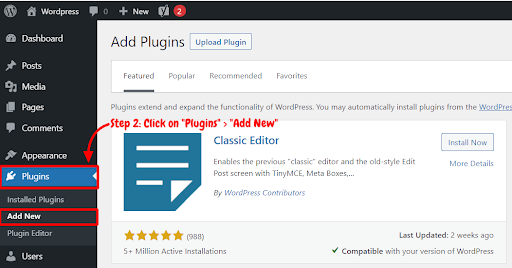
- Log in to your WordPress dashboard.
- Go to "Plugins" > "Add New".
- Search for an SMTP plugin like "WP Mail SMTP" or "Easy WP SMTP".
- Install and activate the chosen plugin.
Step 4: Configure the SMTP Plugin with Yahoo SMTP Settings
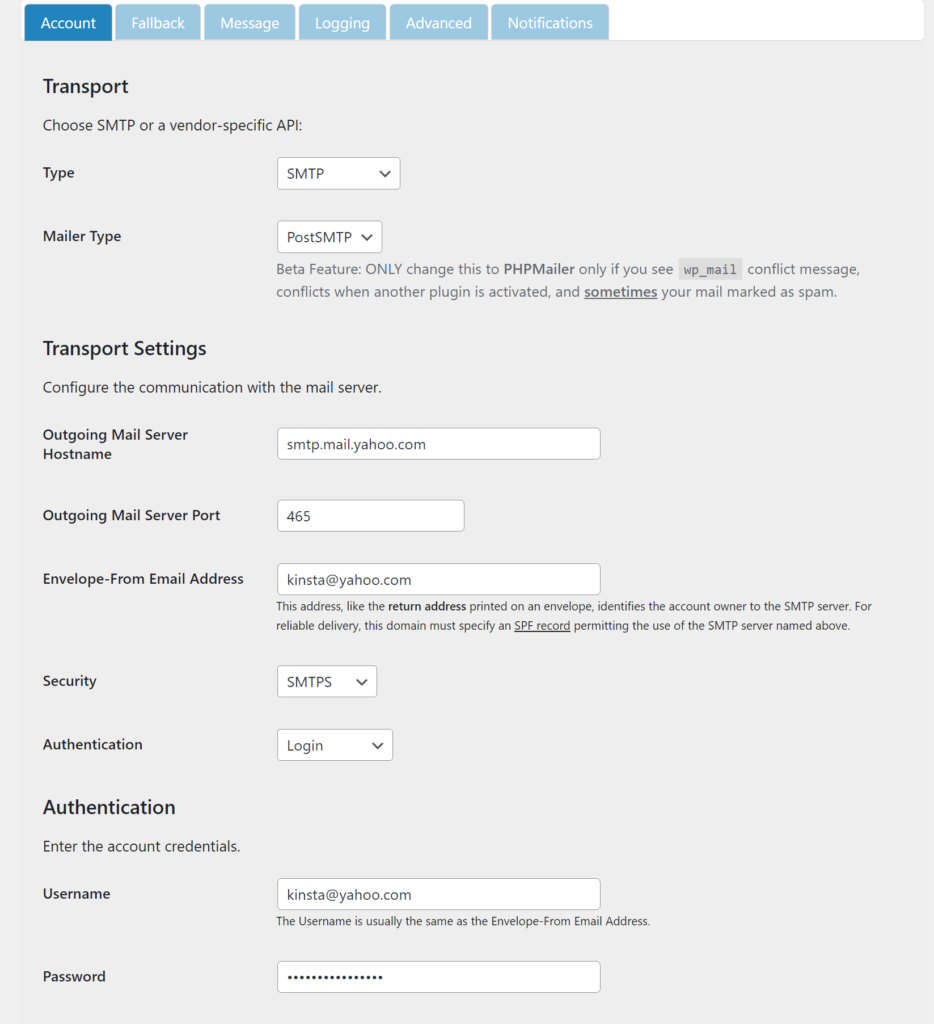
- After activation, navigate to the plugin’s settings page from your WordPress dashboard.
- Enter the following SMTP details:
- SMTP Host: smtp.mail.yahoo.com
- SMTP Port: 465 (SSL) or 587 (TLS)
- Encryption: Choose SSL or TLS based on the port you selected.
- Authentication: Yes, enable authentication.
- SMTP Username: Your full Yahoo email address (including '@yahoo.com').
- SMTP Password: The app-specific password you generated earlier.
Step 5: Save Your Settings and Send a Test Email
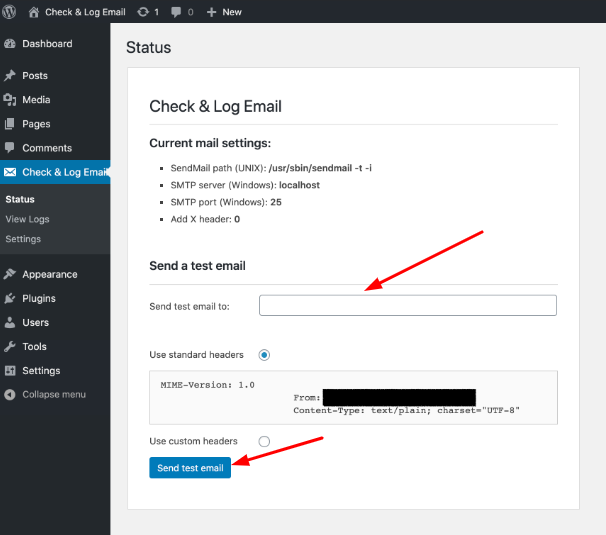
- Save the changes you've made to the SMTP settings.
- Look for an option within the plugin to send a test email. This is usually found in the plugin's settings page.
- Enter an email address where you can receive the test email and send it.
- Check the recipient's email inbox to confirm that the test email was received successfully.
How to Create App-Specific Password in Yahoo?
Creating an app password in Yahoo ensures secure access to your account through third-party applications. Here's how to do it in simple steps:
Log into Your Yahoo Account
- Open your web browser, go to the Yahoo login page, and sign in to your account.
Navigate to Account Security Settings

- Click on your profile name at the top right corner.
- Select "Account Info" or "Account Security" from the dropdown menu.
Enable Two-Step Verification (If Not Already Enabled)
- Find the "Two-step verification" option on the "Account Security" page.
- Click the toggle button to turn it on.
- Add your phone number and verify it using the code sent via SMS or call.
Generate App Password

- On the "Account Security" page, look for "Generate app password" or "Manage app passwords."
- Click on it to access the app password generation tool.
Select Your App

- Choose the application you're creating the password for from the provided list, or select "Other" to manually enter the name.
Generate and Record Your App Password
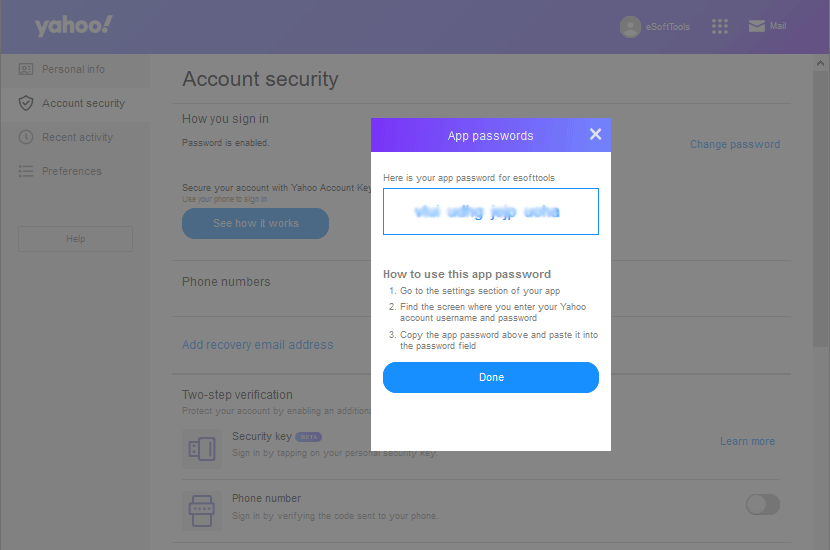
- Click "Generate" to create a unique, 16-character app password.
- Copy and securely save the app password displayed, as it won't be visible again.
Use Your App Password
- Enter this app password in the password field of your email client or application instead of your Yahoo account password.
Manage Your App Passwords
- Create additional app passwords as needed by repeating the steps above.
- To revoke an app password, go back to "Manage app passwords" in your account settings and delete or revoke access as necessary.
How to Configure Email Client with Yahoo IMAP & POP Settings

Configuring your email client with Yahoo's IMAP or POP settings allows you to access and manage your Yahoo Mail account from third-party email clients such as Microsoft Outlook, Apple Mail, or Mozilla Thunderbird. Here's how you can set up both IMAP and POP configurations:
Configuring Yahoo Mail with IMAP Settings
1. Open Your Email Client: Launch the email client you wish to use and navigate to the account settings or account addition section.
2. Add a New Account: Choose the option to add a new email account.
3. Enter Your Email Information: Input your Yahoo Mail address (e.g., yourname@yahoo.com) and password. If two-step verification or Account Key is in use, an app-specific password can be created.
4. Select IMAP and Input Settings:
- IMAP Server: imap.mail.yahoo.com
- Port: 993
- Encryption: SSL/TLS
- Username: Your full Yahoo email address
- Password: Your Yahoo account password or app-specific password
5. Confirm and Test: Save your settings and use any provided test function to ensure everything is correctly set up. Your email client should now sync with your Yahoo Mail account via IMAP.
Configuring Yahoo Mail with POP Settings
1. Open Your Email Client: Start your preferred email client and go to its account settings or add account option.
2. Add a New Account: Opt to add a new email account.
3. Enter Your Email Information: Provide your Yahoo Mail address and password. Utilize an app-specific password if you have enhanced security features enabled on your Yahoo account.
4. Select POP and Input Settings:
- POP Server: pop.mail.yahoo.com
- Port: 995
- Encryption: SSL/TLS
- Username: Your full Yahoo email address
- Password: Your Yahoo account password or app-specific password
5. Confirm and Test: After saving your settings, test the setup to confirm that your email client can download emails from your Yahoo Mail account via POP.
How to Increase Your Email Communication Security Using the Yahoo SMTP Server
Ensuring secure email sending when using Yahoo's SMTP server is critical to protect sensitive information and maintain the privacy of your communications.
Here are several steps and best practices to follow for secure email transmission:
1. Use SSL/TLS Encryption

When configuring your email client or application to send emails via Yahoo's SMTP server, always use SSL (Secure Sockets Layer) or TLS (Transport Layer Security) encryption. This are outgoing mail server hostname that ensures that the data transmitted between your email client and Yahoo's SMTP server is encrypted, making it difficult for unauthorized parties to intercept and read your emails. It secures both incoming mail as well as outgoing mail
Outgoing mail server port:
- SSL port: 465
- TLS port: 587 (if available)
- Ensure your email client or application is set to require a secure connection when using these ports.
2. Enable Two-Factor Authentication
Activate two-step verification for your Yahoo account to introduce an additional level of security. This process necessitates a secondary authentication method in addition to your password upon login, enhancing the protection of your account. If the application you use to send emails accommodates this feature, it can offer further security for your account, safeguarding it in the event that your password is breached.
3. Use Yahoo Mail App Password
Instead of using your regular Yahoo mail password for SMTP authentication, generate app password. If you have two-step verification enabled, Yahoo allows you to generate app-specific passwords.
These are single-use passwords for your Yahoo account that are used in place of your regular password for applications that send emails through Yahoo's SMTP server. This means that even if an app-specific password is compromised, your main Yahoo account password remains secure.
4. Implement SPF, DKIM, and DMARC
For domain owners sending emails from Yahoo Mail addresses associated with their domains, implementing Sender Policy Framework (SPF), DomainKeys Identified Mail (DKIM), and Domain-based Message Authentication, Reporting, and Conformance (DMARC) records can significantly enhance email security.
These technologies help prevent email spoofing and phishing attacks by verifying that the emails sent from your domain are authorized and have not been tampered with.
5. Monitor Your Account for Suspicious Activity
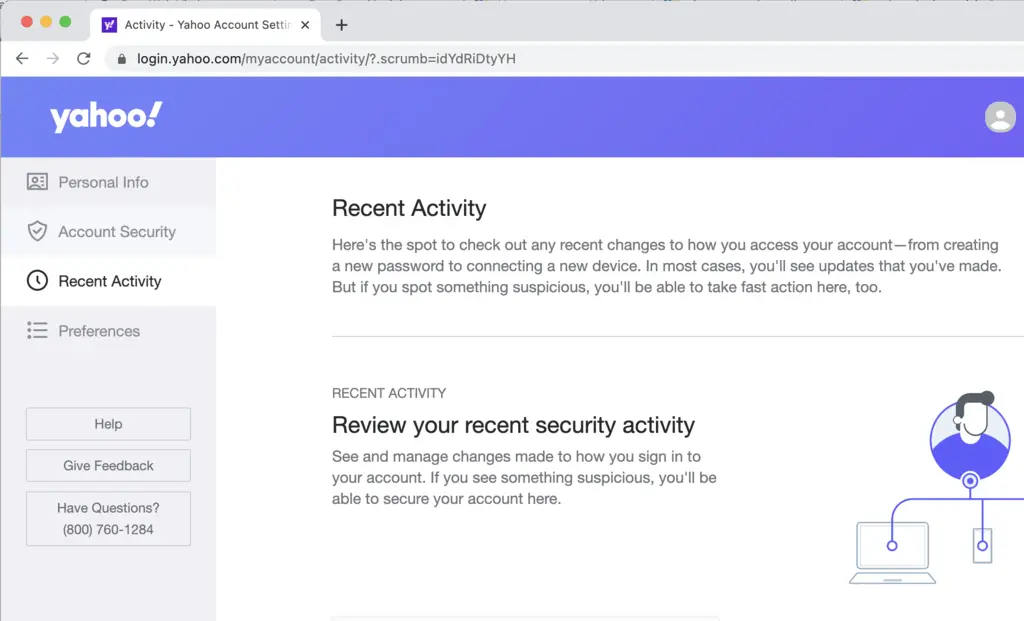
Regularly check your Yahoo Mail account for any unusual activity. This includes keeping an eye on sent emails to ensure they are all authorized by you, which can indicate whether your SMTP settings or app passwords have been misused.
Troubleshooting Common Issues with Yahoo Mail SMTP Settings

Common issues with Yahoo Mail SMTP settings can affect your ability to send emails from third-party email clients. Here are some frequent problems users encounter, along with solutions for each:
1. Cannot Connect to SMTP Server
Issue: The email client fails to establish a connection with the Yahoo SMTP server.
Solution:
- Ensure you're using the correct SMTP server settings: smtp.mail.yahoo.com, port 465 for SSL or 587 for TLS.
- Check your internet connection to ensure it's active and stable.
- Temporarily disable any firewall or antivirus software that might block the connection.
2. Authentication Error
Issue: An error message indicating the username or password is incorrect when trying to send emails.
Solution:
- Verify that you're using your full Yahoo Mail email address as the username.
- If you have enabled two-step verification or Account Key for your Yahoo account, ensure you generate and use an app-specific password instead of your regular Yahoo password.
3. Emails Not Being Sent
Issue: Emails appear to send but never arrive at the destination.
Solution:
- Check the "Sent" folder in your Yahoo Mail to see if the email is there.
- Ensure you haven't hit Yahoo's email sending limits, which can restrict your ability to send more emails temporarily.
- Verify the recipient's email address for any typos or errors.
4. Connection Timed Out
Issue: The email client cannot connect to the SMTP server, resulting in a timeout error.
Solution:
- Confirm you're using the right port and encryption method (SSL on port 465 or TLS on port 587).
- Check your network connection for any disruptions or slow speeds.
- Increase the server timeout setting in your email client, if available.
5. SSL/TLS Error
Issue: The email client returns an error related to SSL or TLS encryption when attempting to send an email.
Solution:
- Ensure that SSL or TLS encryption is enabled in your email client's SMTP settings.
- Double-check that you've selected the appropriate port for the encryption type you're using (465 for SSL or 587 for TLS).
6. Sending Limits Exceeded
Issue: Receiving a message that you've exceeded Yahoo's sending limits.
Solution:
- Wait 24 hours before attempting to send emails again. Yahoo's sending limits reset daily.
- Review your email sending practices to prevent hitting these limits in the future, such as spreading out mass mailings over several days.
7. Failed to Send Email with Attachments
Issue: Emails with attachments fail to send.
Solution:
- Check the size of the attachments. Yahoo has a limit on the email size (including attachments), which is typically 25MB.
- Try sending the email without attachments to see if the issue persists, indicating a problem with attachment size.








